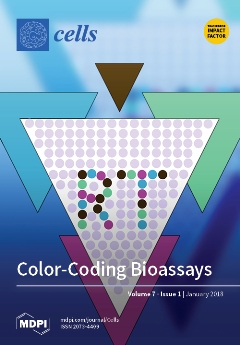Background and Objective: YB-1 is a transcription and oncogenic factor capable of binding to DNA and RNA performing versatile functions within normal and cancer cells. Some studies reported the binding of YB-1 with a collagenases gene promoter and influencing their expression. In addition,
[...] Read more.
Background and Objective: YB-1 is a transcription and oncogenic factor capable of binding to DNA and RNA performing versatile functions within normal and cancer cells. Some studies reported the binding of YB-1 with a collagenases gene promoter and influencing their expression. In addition, the role of YB-1 in malignant melanoma was not elucidated. Thus, in this study, the aim was to knock down the expression of YB-1 in A375 malignant melanoma cancer cell using the shRNA approach and study its effect on cancer cell proliferation, migration, and expression of collagenases.
Methods: A375 malignant melanoma cell lines were grown in standard conditions and were transfected with three plasmids containing a retroviral pGFP-V-RS vector, two of them containing targeting sequences for YB-1 mRNA. The third plasmid contained a scrambled mRNA sequence as a negative control. Expression of YB-1 was validated using immune-fluorescence staining, RT-PCR and western blotting. The cancer cell proliferation was determined using MTT assay, serial trypan blue cell counting and cell cycle flow-cytometry analysis. Expression of collagenases (MMP1, MMP8, and MMP13) was evaluated using RT-PCR and western blotting analysis. In addition, a wound-healing assay was used to assess cell migration potential. Statistical analysis was performed using one-way ANOVA test with Bonferroni post hoc analysis to compare the quantitative results among samples.
Results: The established silenced cell strains (P1 and P2) had nearly 70% knockdown in the expression of YB-1. These YB-1 silenced strains had a significant cell cycle-specific reduction in cell proliferation (
p < 0.05 in serial cell counting and cell cycle flow cytometry analysis,
p < 0.001 in MTT assay). In addition, YB-1 silenced strains had a remarkable reduction in cell migration potential. Expression of MMP13 was significantly reduced in YB-1 silenced strains.
Conclusion: YB-1 oncoprotein is a promising target in the treatment of malignant melanoma. Silencing of this protein is associated with significant anti-proliferative, anti-invasive and MMP13 insulating properties in A375 malignant melanoma cancer cell lines.
Full article






